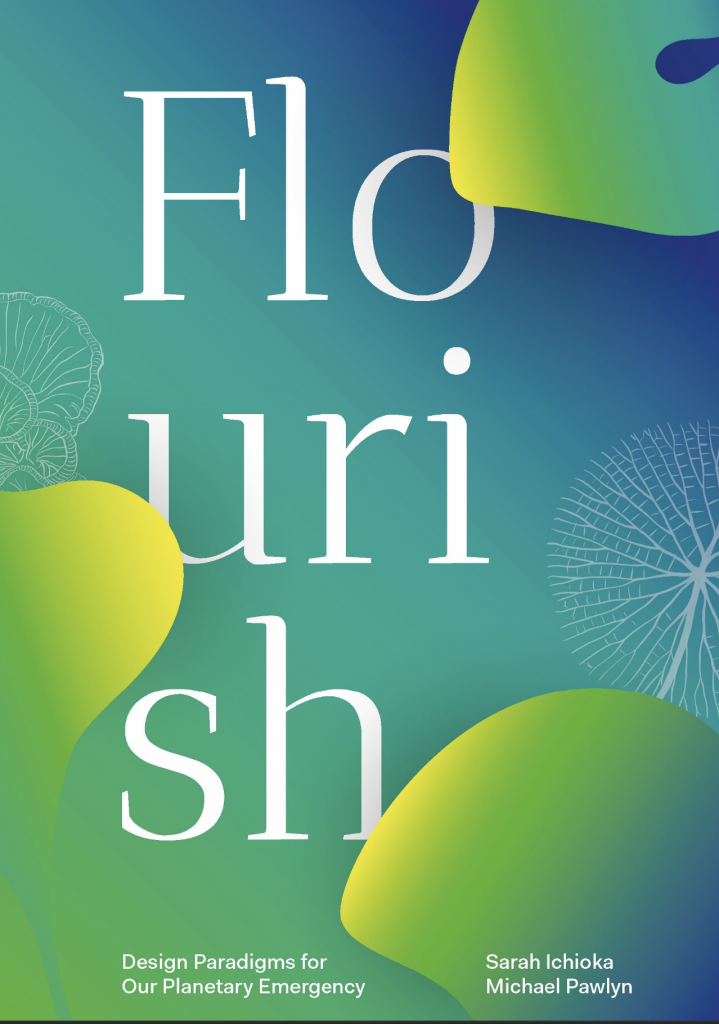Enjoy this article?
Most Museums Journal content is only available to members. Join the MA to get full access to the latest thinking and trends from across the sector, case studies and best practice advice.

It is easy to feel overwhelmed by the scale and urgency of the climate and biodiversity crisis. However, in this fascinating book, authors Sarah Ichioka and Michael Pawlyn move quickly “from alarm to action”, opening up an array of possibilities and an urgent invitation to build a thriving future together.
Drawing on thinking from diverse cultural traditions and perspectives and disciplines as varied as psychology, sociology, anthropology, biology, economics, architecture and civic planning, they weave a compelling call for a systemic shift from sustainable to “regenerative” practice (defined as that which “supports the flourishing of all life, for all time”). The variety of sources provides a multitude of jumping-off points for further reading.

Both authors are built environment professionals but this book is relevant to anyone with an interest in how we make, manage and inhabit our buildings, public spaces and communities.
For museums and cultural institutions, it offers a series of particularly tantalising challenges. The authors identify the huge leverage for change that could come from looking and acting beyond our current cultural model. They write: “Cognitive neuroscience has shown that the best way to dislodge a story is not to argue against it, but to shape a different, more persuasive story.” What better place than museums and cultural spaces to examine the roots of our existing ways of working – and together explore a new and persuasive story.
The text outlines five shifts needed to address our global challenges. The first chapter, Possibilism, focuses on our human capacity for change, asking “How can we work to reclaim our individual and collective sense of power to effect change?” Museums are ideally placed to help us explore this capacity. Their collections evidence human adaptability and the enormous societal shifts we are capable of – in energy, production, consumption, transport, arts and culture as well as in ethics.
The second chapter questions our dominant anthropocentric frame, arguing that “the way humans see our relationship with nature will be critical to our species’ future prospects.” There is surely a role for our natural history collections and communal green spaces in stimulating such collective exploration.
In chapter three the authors delve into the impacts of our relationship with time – as the philosopher Roman Krznaric suggests: “We treat the future as a distant colonial outpost where we dump ecological degradation.” Exploring the potential of frames such as the “Long Now” and “Cathedral Thinking”, Ichioka and Pawlyn propose a shift from “time is money” to “time is life”. Our rich heritage sector can help us rethink prevailing ideas about time and “progress” and cultivate what the authors call a “legacy mindset”.
They go on to examine new democratic forms, mutualism and citizen activism, as well as ideas of “private sufficiency and public luxury”. They also look at the transformative potential of co-creation and citizen design.
Their final framing considers Planetary Health and, especially, pushes back against economic growth as our dominant societal driver, while offering an analysis of alternative measures of societal progress. Initiatives such as the Happy Museum Project have focused on the wellbeing of people, place and planet, and can support museums as they reimagine their purpose within this frame.
The book concludes with a rousing call to action: “We are at a critical and perilous crossroads, when we must choose to actively ‘make the road by walking’” – a phrase adapted from the poet Antonio Machado. Inviting each of us to take stock and take responsibility, the authors conclude: “This is what it means to live now.”
Most Museums Journal content is only available to members. Join the MA to get full access to the latest thinking and trends from across the sector, case studies and best practice advice.